If you’re building your own cottage or have acquired a top-floor living space of this configuration, it’s time to unleash your imagination!
What is an Attic Floor?
Attic floor is a separate space under the roof, which can be used as a storage space or a full-fledged living room. They began to appear in the 17th century and are named after the architect Francois Mansart, who contributed to the emergence of this new trend.
Modern attics can vary in construction and design. For example, they can be vertical, made of the same material as the house, or sloping, where the rafter roof system serves as the frame. Essentially, it is a room located above the main facade of the building, intersecting with the roof.
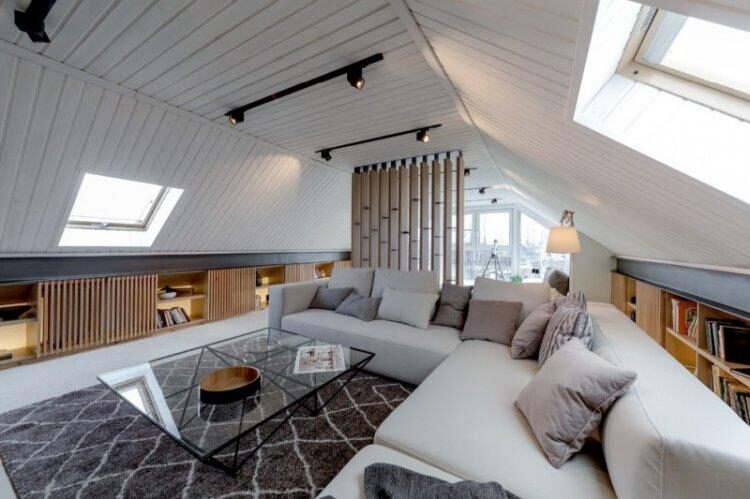
An attic floor can sometimes extend beyond the boundaries of the lower level, or it can be a small element of a complex multi-level roof. The unique construction of the attic allows for creating any shapes and lines, giving designers endless possibilities to experiment with different designs.
Adding an attic level increases the useful living space, and homeowners can create useful rooms like a home office, home theater, game room, billiard room, or workshop. Proper insulation, which includes an additional air layer, can significantly reduce heat loss for the entire building. The attic floor also gives the house a complete and harmonious appearance.
One of the main challenges of building an attic floor is complying with strict thermal, sound, and waterproofing standards; otherwise, the space will be unsuitable for use. Moisture condenses under the roof, while rain and precipitation accumulate outside, making it crucial to ensure proper insulation. Additionally, finding suitable windows that fit the geometry of the space and compensate for the lack of natural light can be a time-consuming process.
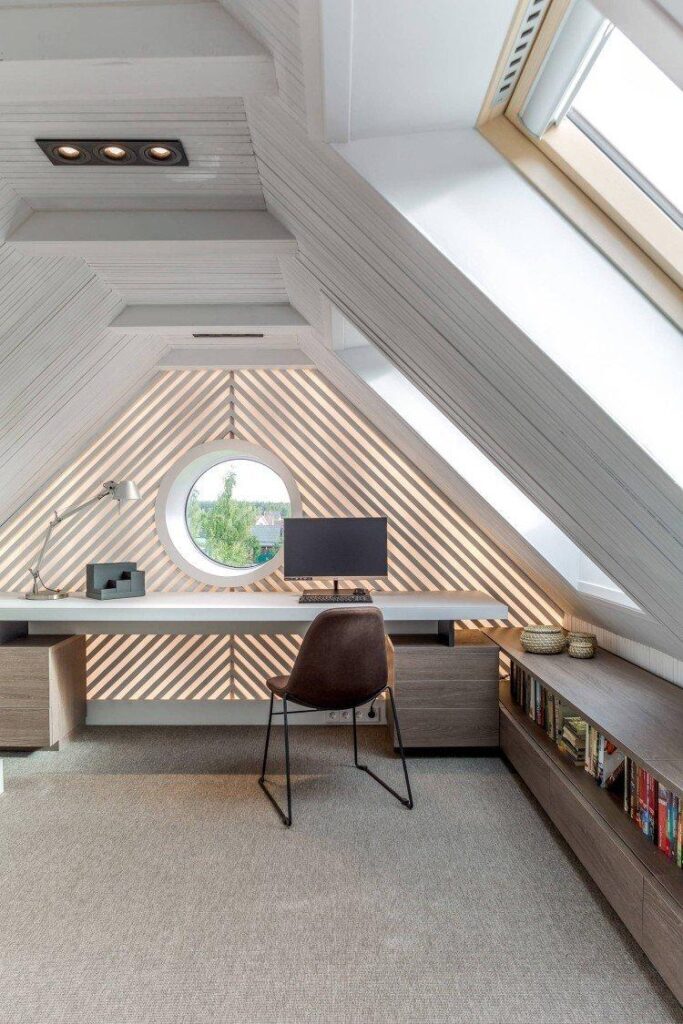
The only limitation when choosing an interior design style for an attic is the specificity of its construction. In small cottages, simple and minimalist interiors work best, creating a sense of space. It’s also easier to work with design styles that allow for exposed beams, utilities, and complex forms.
Modern-style attic
The modern style balances between solid classicism and elegant high-tech. This is exactly what you need to decorate an elegant yet functional attic. Natural materials are combined with artificial ones, and a concise color scheme is paired with complex and diverse textures.
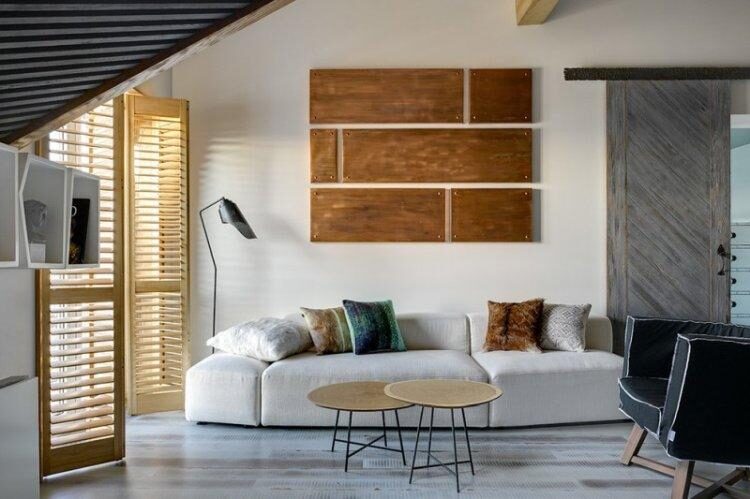
Attic in a classic style
Attic in a classic style
The classic style is only suitable for large and spacious attics, so in a small space it’s better to combine it with modern elements. Use wood, tile, stone-like finishes, and textured expensive textiles. This is the best way to recreate the atmosphere of a luxurious country mansion.
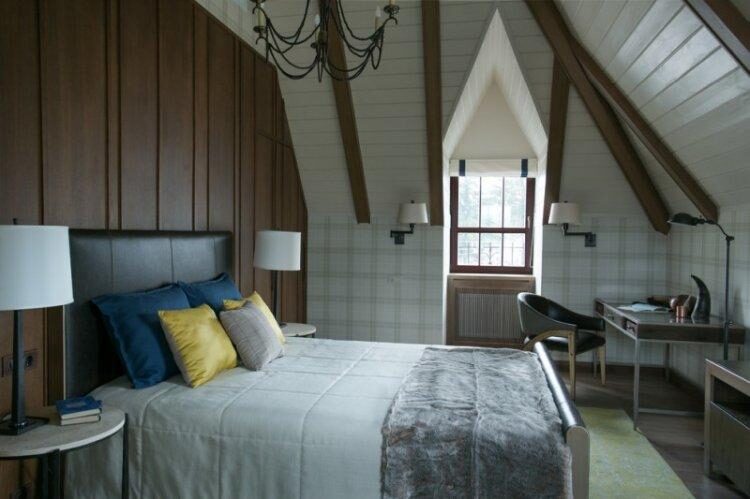
Attic in a Provencal style
A Provencal-style attic is not only aesthetic, but also practical, as it solves several problems at once. The light pastel color scheme creates a feeling of light, air, and space even in a small attic room. Natural wood preserves the homely atmosphere, and the beams from the roof truss system effectively complement the style of the French province.
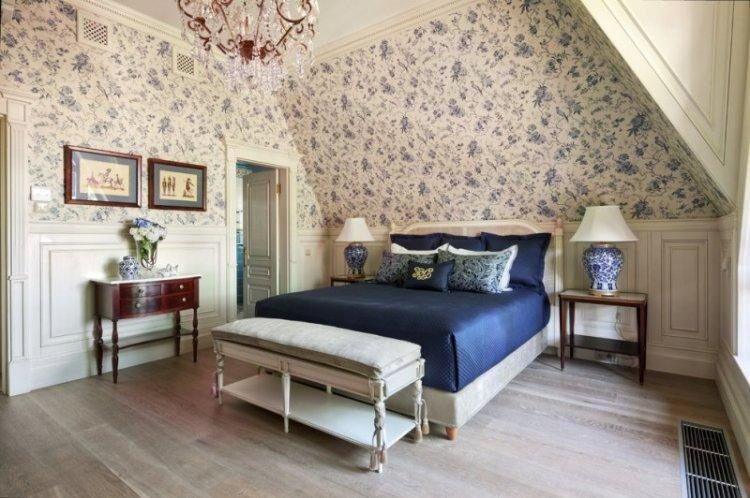
Attics are often characteristic of homes in Scandinavian style, so such an interior will fit in perfectly. Preserve all forms and outlines, use natural materials, a light background, and a few colorful accents. Limit yourself to minimalist furniture and create an atmosphere with the help of cute handmade accessories.
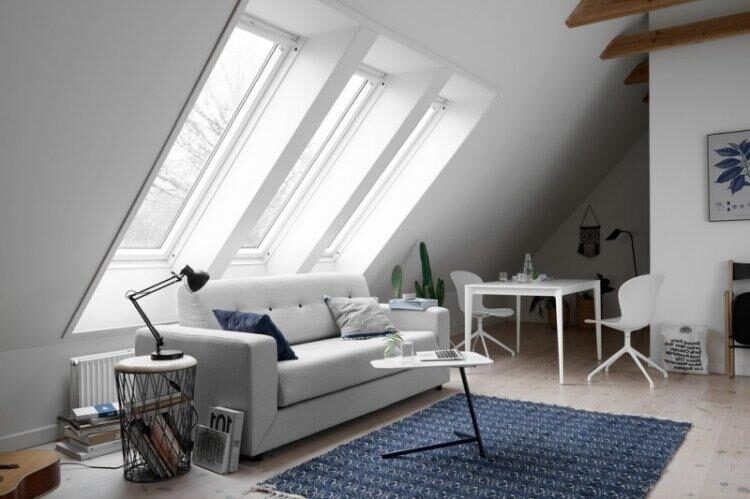
Attic in a loft style
Creating loft-style attics is very convenient because all the communications, beams, and complex forms become an interesting advantage rather than a problem. You won’t have to hide the roof structure and completely cover the ceiling. The walls also don’t necessarily need to be leveled and hidden behind drywall constructions or panels.
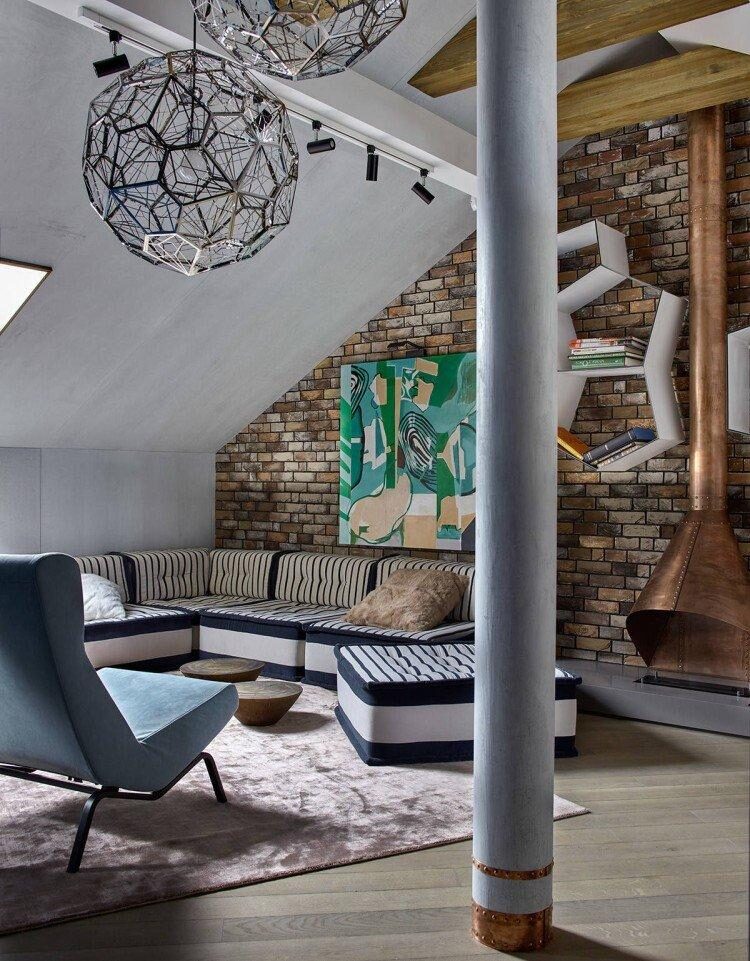
Color Solutions
Due to the complex geometry and lack of light in the attic, it is best to use light shades when decorating: white, milky, beige, or gray. Natural wood with its expressive texture and patterns is also very relevant. However, if you have a large and spacious attic, feel free to use bold or dark colors depending on the chosen style.

Materials and Decoration
You primarily use wood, metal, or reinforced concrete as building materials when setting up an attic. No matter the usage plan, it requires professional insulation and weather protection. Choose windows with a deep fit, and avoid using mounting foam during installation. You can use almost any finishing materials!
Floor finishing
For floor finishing, remember that the attic floor is the ceiling of the floor below. Therefore, prioritize high-quality sound insulation. Usually, the floor gets laid on joists for convenience and speed. Above the frame and substrate, you can lay laminate or high-strength linoleum, and less frequently – tiles or parquet. It’s advisable to steer clear of excessively heavy materials like natural stone.

Wall finishing
For finishing walls, more plastic materials that can easily withstand minor displacements and deformations inherent in the roof are best suited. Such fluctuations are not noticeable at first glance, but too rigid cladding over time can deform or crack. Plastic is also usually not used – it is not environmentally friendly enough, especially when overheated in the heat.
A classic solution is natural wood, which always looks warm and cozy. It creates additional insulation, provides stable heat exchange, and maintains a healthy microclimate. From more budget materials, pay attention to plywood, lining, siding, and drywall. They can be painted, varnished, and even covered with vinyl or non-woven wallpaper.
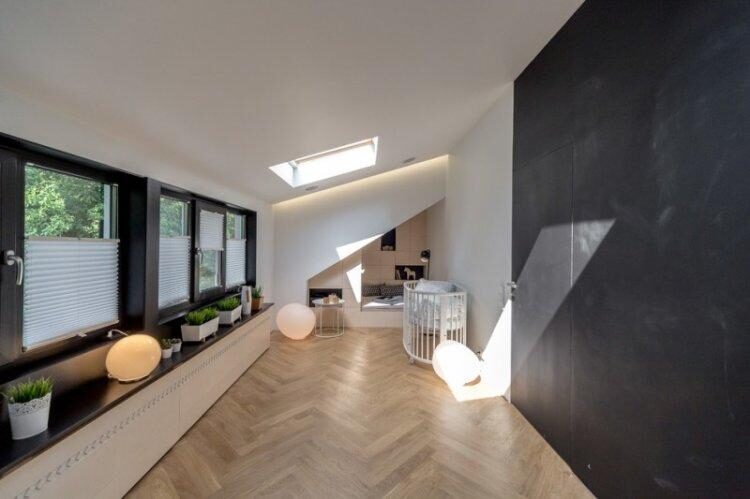
Ceiling design
The feature of the attic ceiling is its complex geometric shapes that need to be skillfully emphasized. But first, make sure you have good insulation and roofing, otherwise the room will overheat in the summer and freeze in the winter. And at the same time, plan ahead for the heating and ventilation system so that the room can be lived in comfortably.
The most budget cladding material is drywall, which easily hides the insulation and any imperfections. It is easy to incorporate any lighting into it and multi-level structures can be made. Wooden paneling or imitation timber is not as flexible in use, but they are warm and cozy.
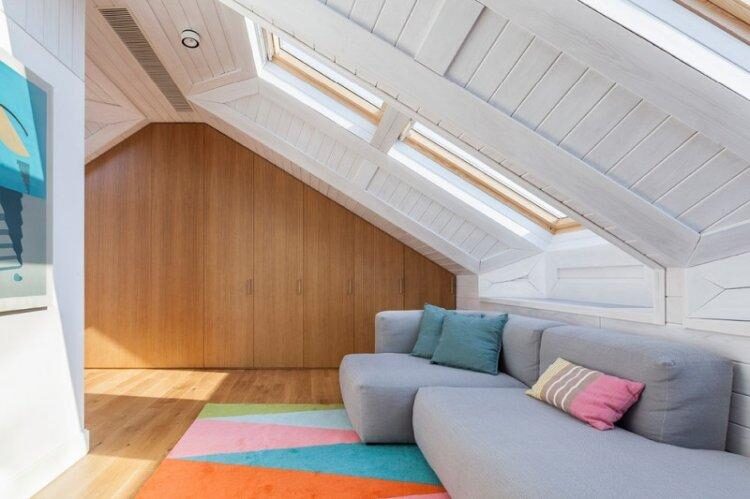
Exposed beams preserve that special atmosphere of the attic in a country house and provide additional insulation. You can leave and emphasize the original roof truss structure or use decorative beams. Suspended lights, chandeliers, ventilation, and electrical wiring can be conveniently attached to them.
Stretch ceilings are only suitable for attics with a simple ceiling construction. Their main advantage is water resistance, so they will save the day if the roof suddenly leaks. In such a case, it will be enough to call a professional and carefully drain the water after repairing the roof.

Attic Decor
The main decoration of any attic is the space itself, so don’t overdo it with complex decor. Otherwise, there is a high risk of overloading the room with unnecessary details. It is better to creatively play with the roof beams, ventilation, curved walls, or attic windows.
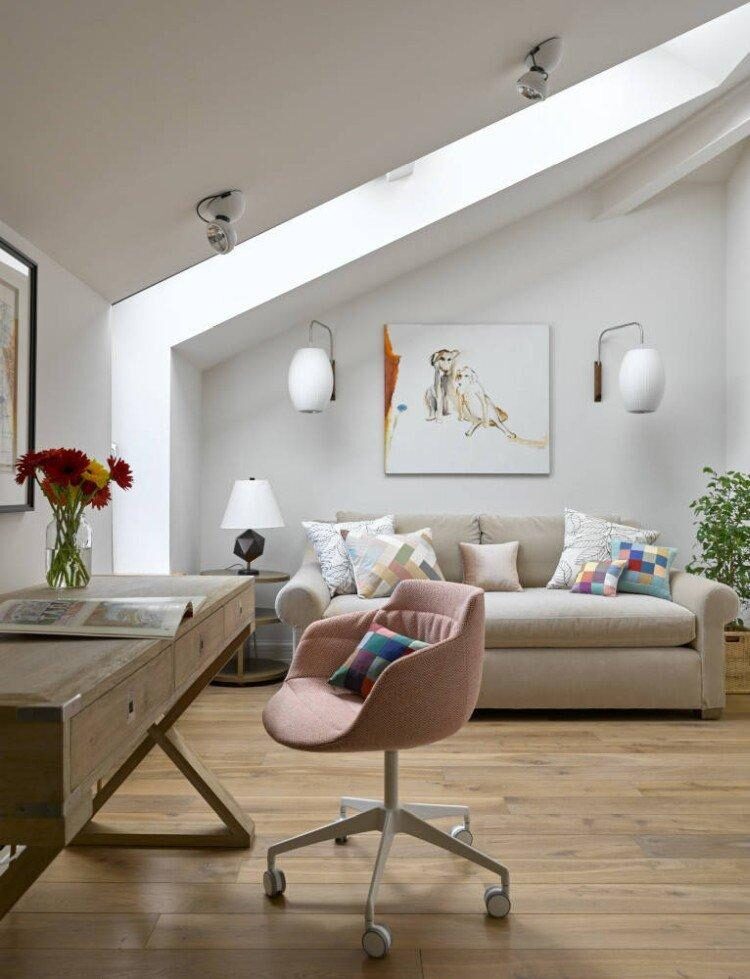
Lighting and Illumination
Due to the specific configuration of the attic, it is difficult to create the usual multi-level lighting. Especially if you want to preserve the outlines of the under-roof space, rather than leveling everything with drywall. In this case, series of pendant and track lighting, wall sconces, floor lamps, and table lamps will be appropriate. Beams, niches, decorative elements can be emphasized with decorative lighting.
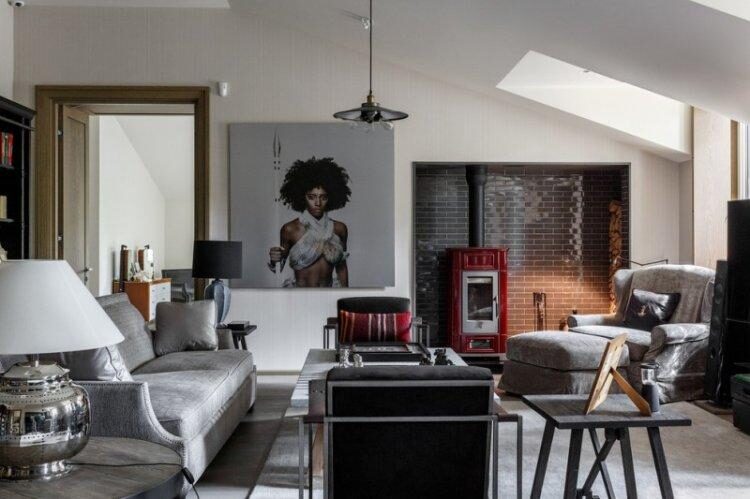
How to decorate a small attic?
To decorate the design of a small attic, use light colors and try to preserve as much natural light as possible. If you only have one room, you can zone it with color, contrasting elements, or thin partitions. Lightweight transverse beams installed between the roof slopes will help create the illusion of space.
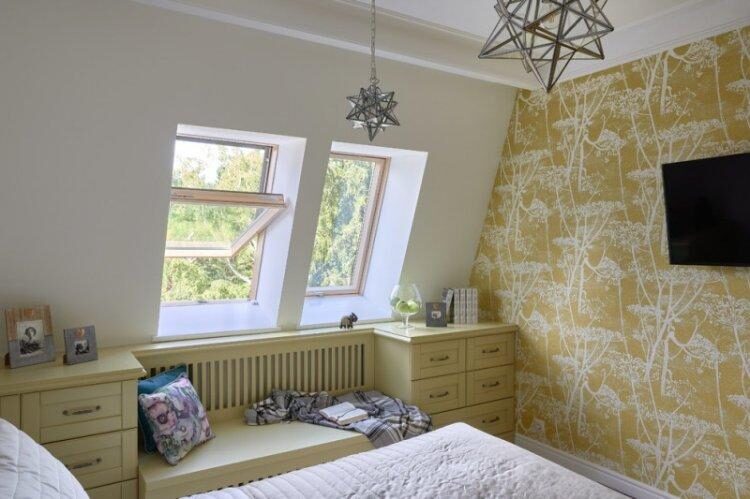
Interiors of attic rooms – photos
As we have already mentioned, a residential attic can be decorated in any way you like. All residential spaces can easily be transferred there – the main thing is to plan the concept in advance.
Design of a bedroom in an attic
A bedroom in the attic is great because it is like a separate space from the rest of the house. This is a real corner for solitude, where you can get away from the hustle and bustle and where guests definitely won’t come. However, when creating the interior of a bedroom, it is also important to seriously consider the entire insulation structure on the walls and roof.
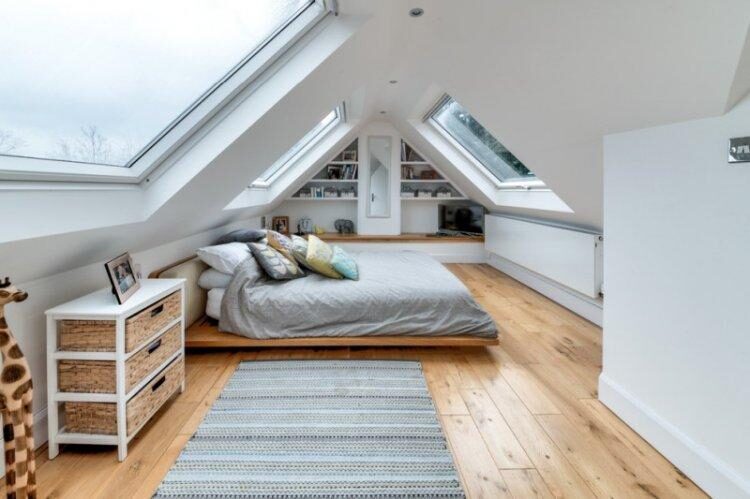
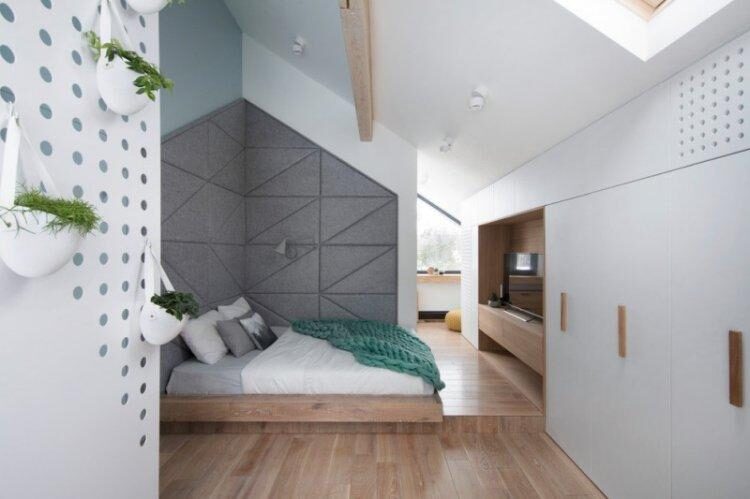
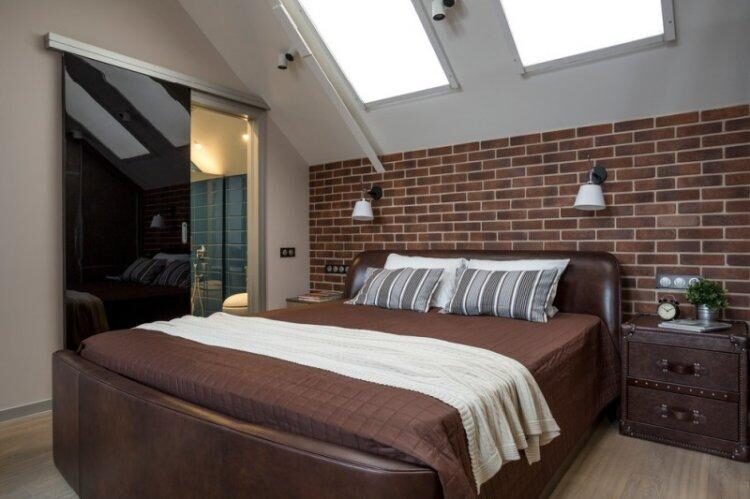
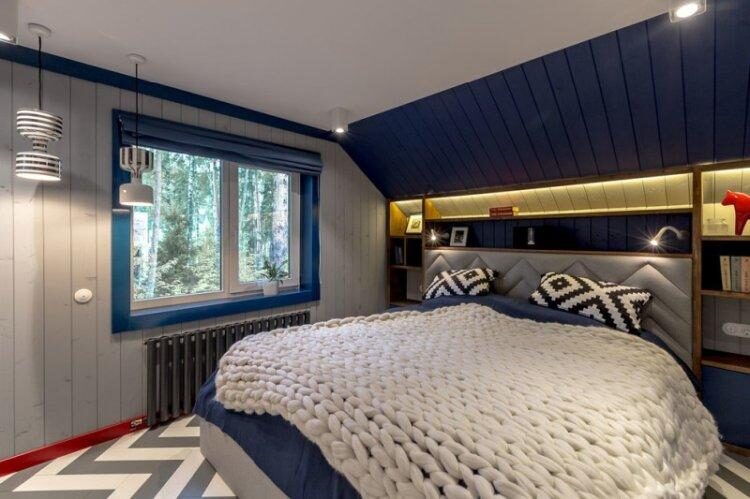
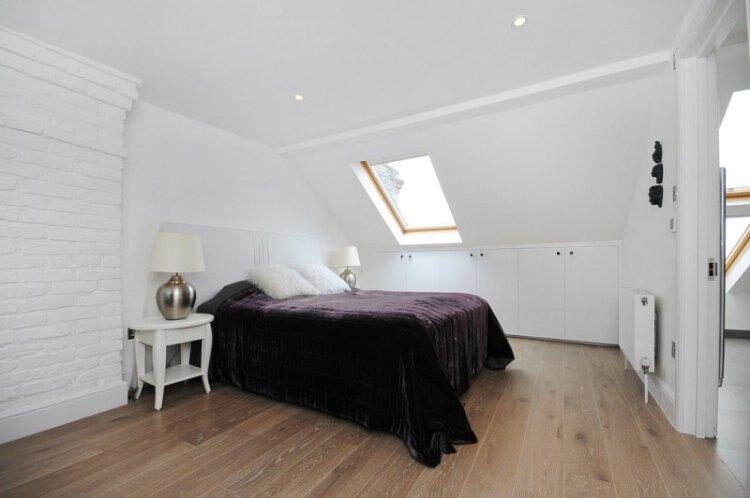
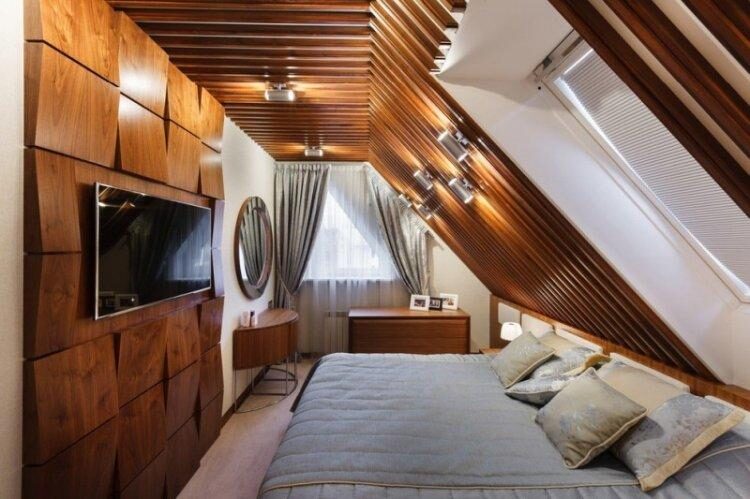
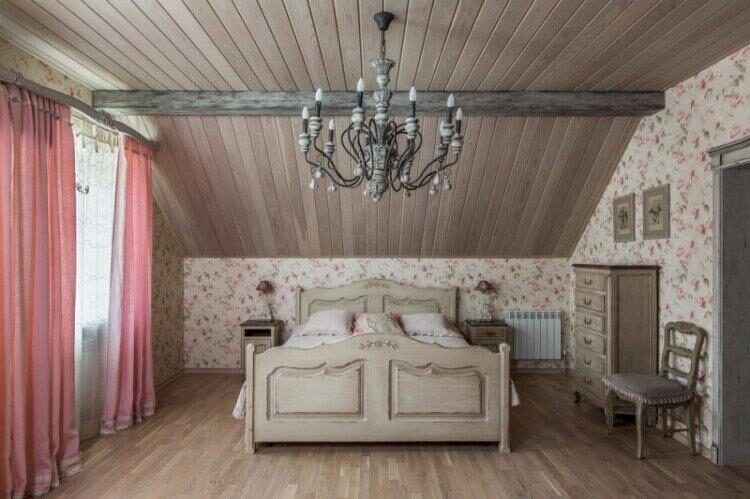
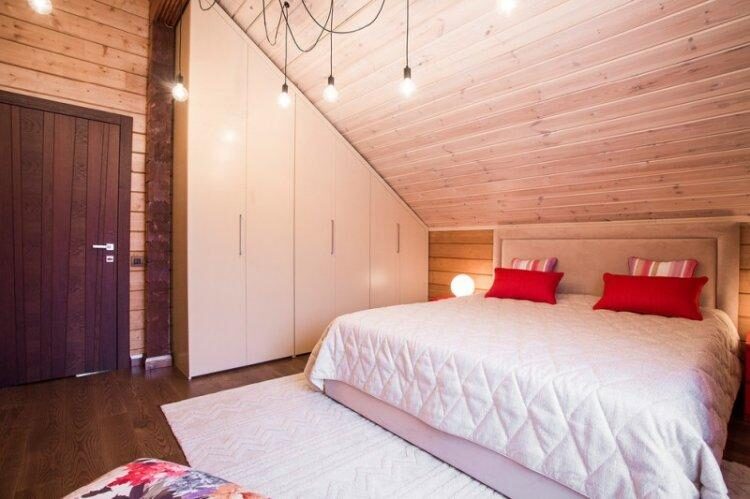

Design of a living room in the attic
We are used to the fact that the living room usually follows the hallway, but it is not the only option. If you already have a spacious attic, it is the perfect place for a relaxation and entertainment area. And in the evening, guests will be delighted with the view from the window – it is always very romantic!
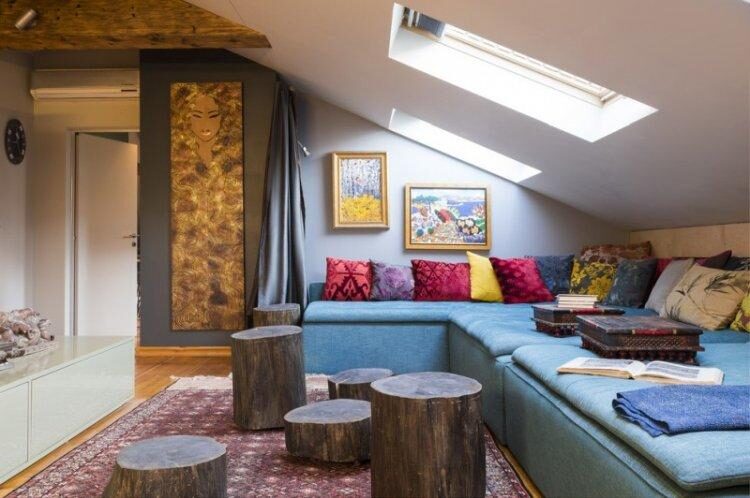
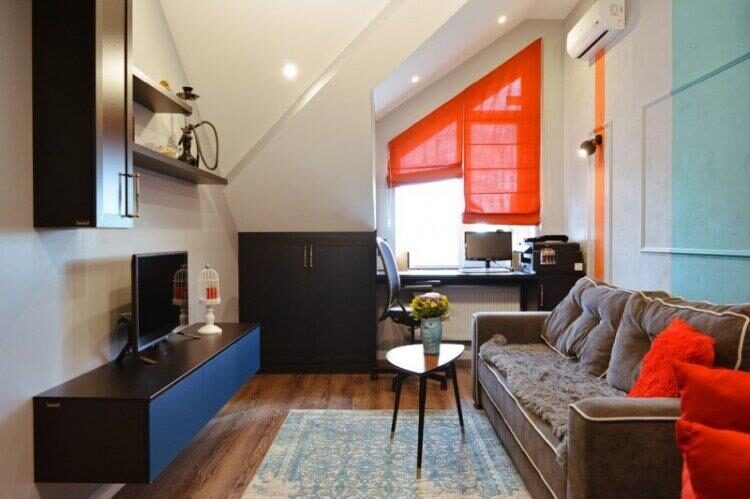

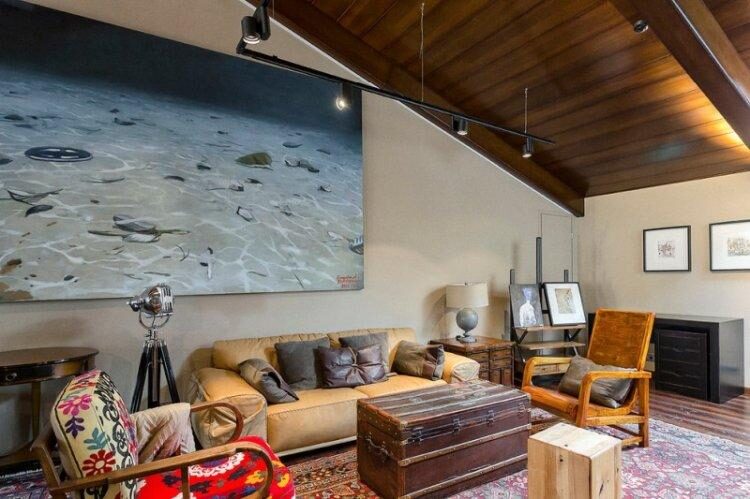
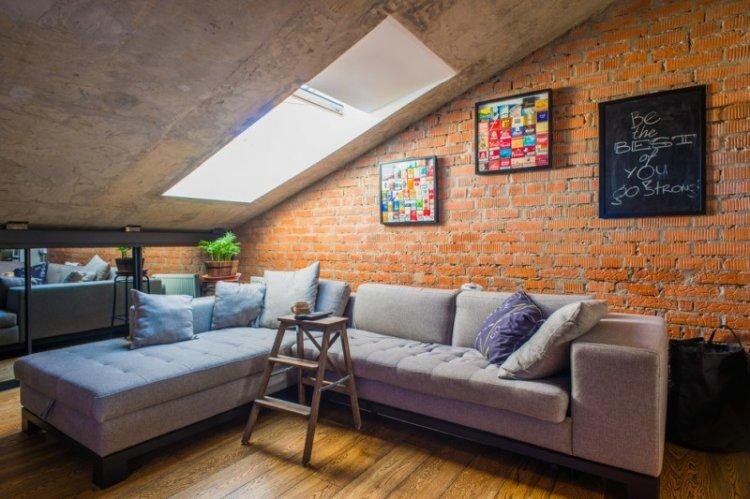
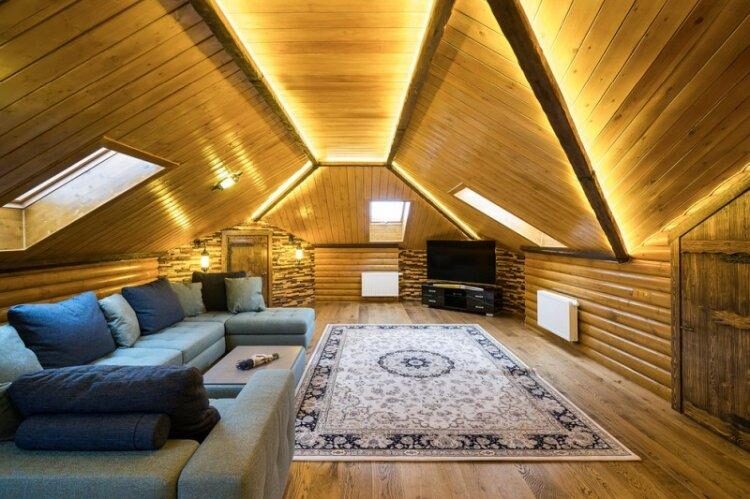
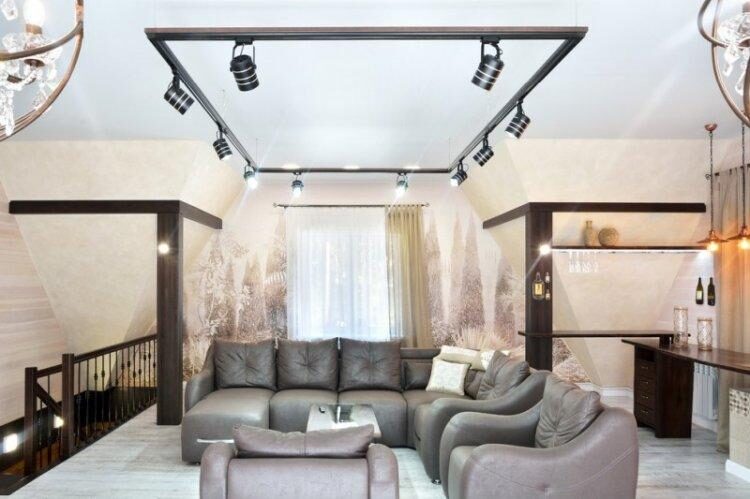
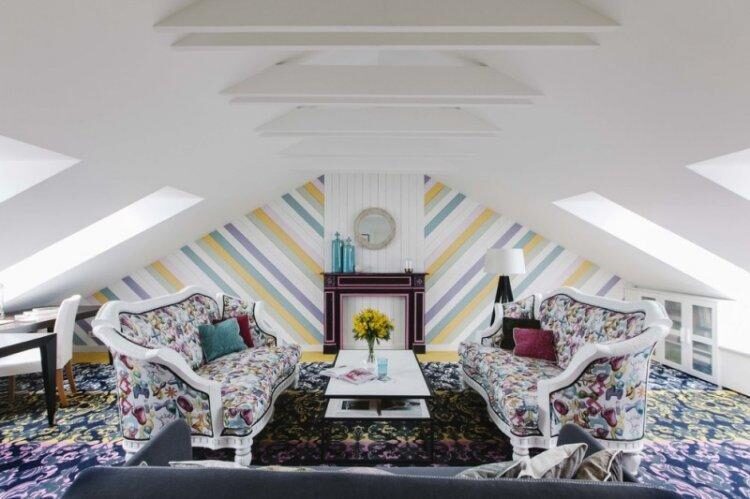
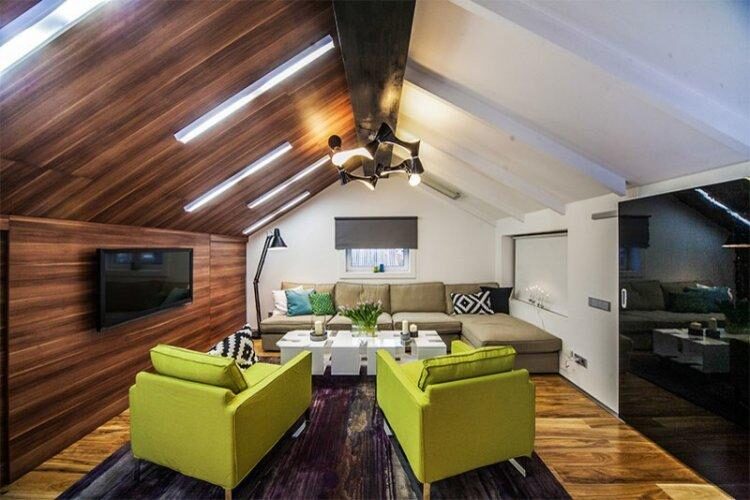

Designing a kitchen in an attic
A kitchen in an attic is appealing for its solitude, as you can go about your tasks without distractions. Smells won’t spread throughout the house, and noisy family members won’t be running around the stove. And if you install the countertop right by the attic window, you’ll be able to enjoy a view from a height.
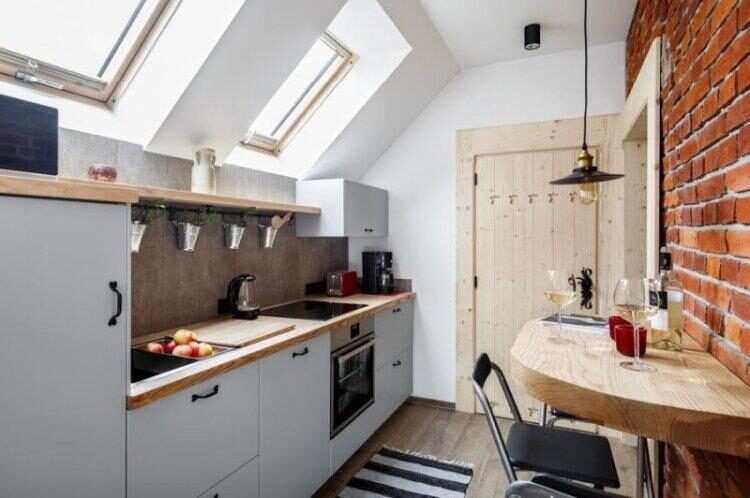
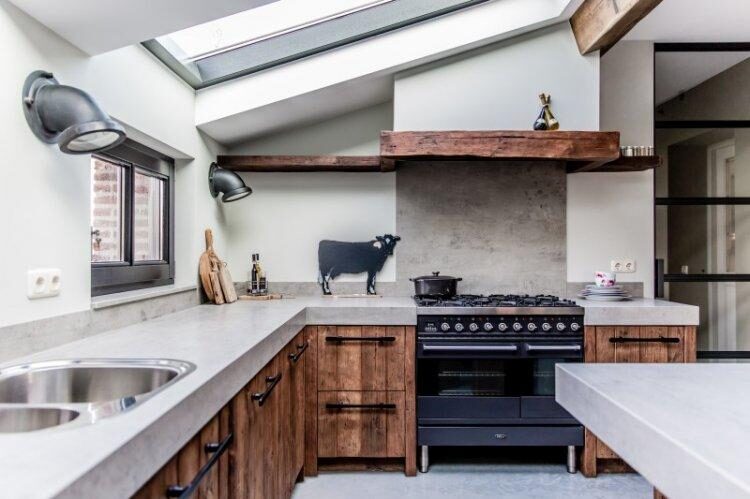
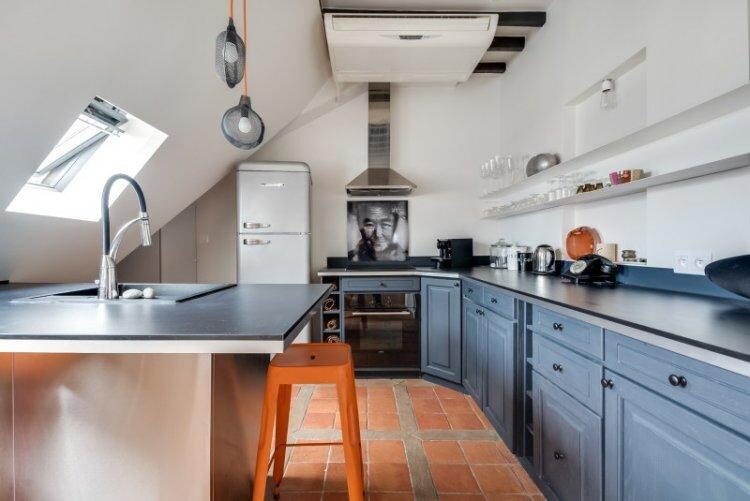
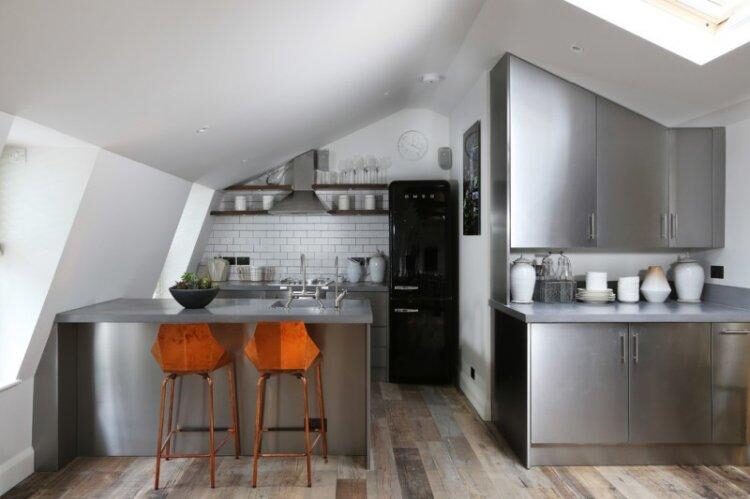

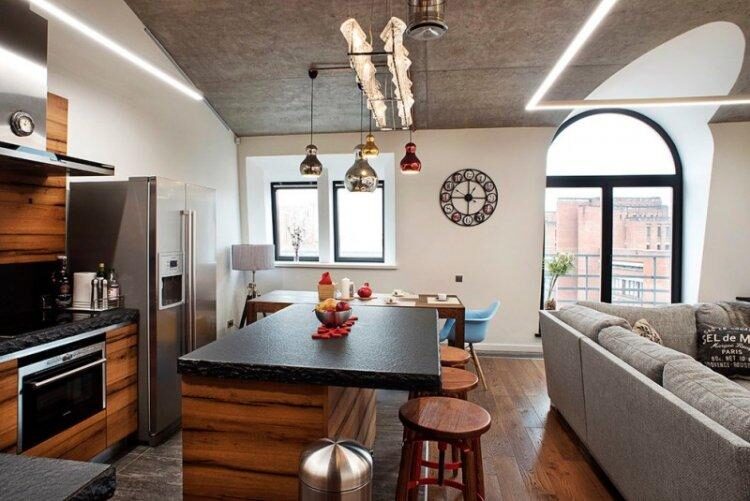
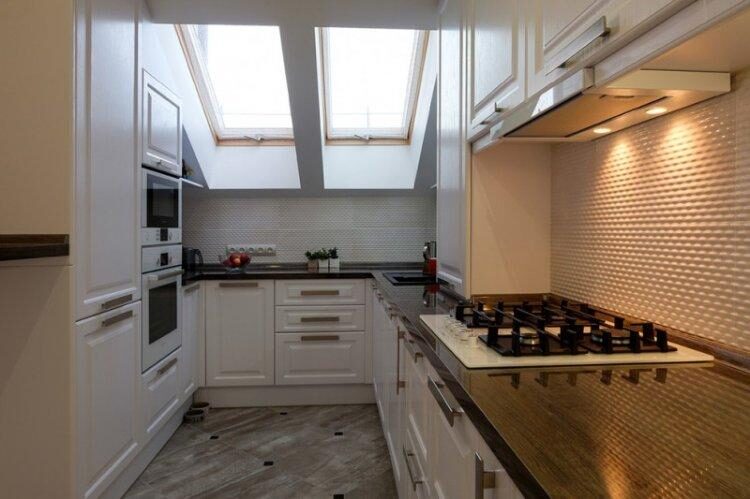
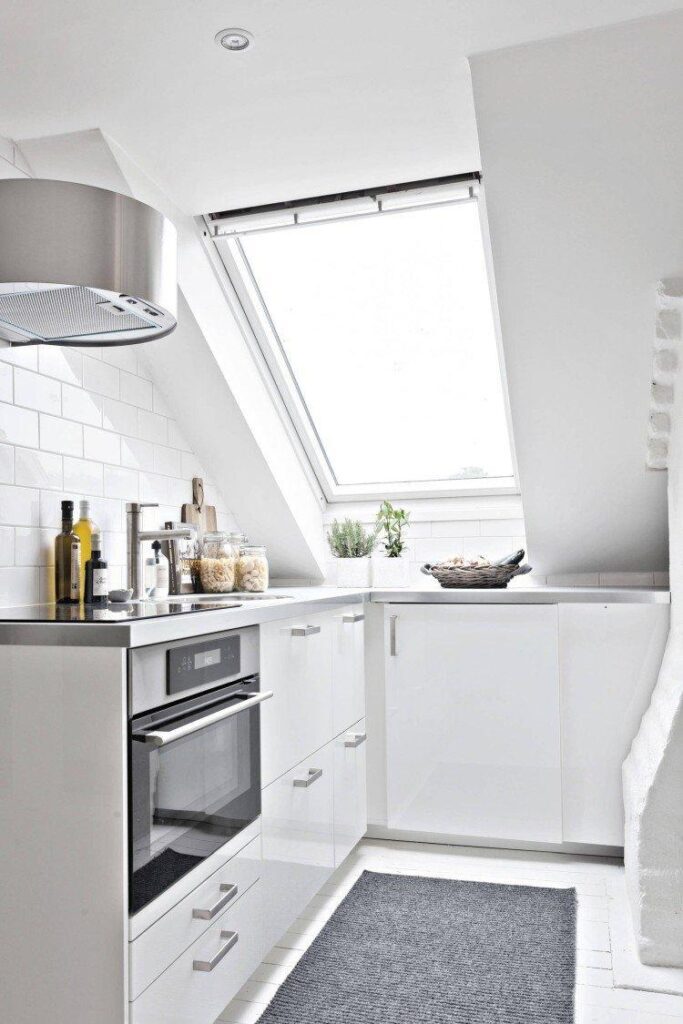
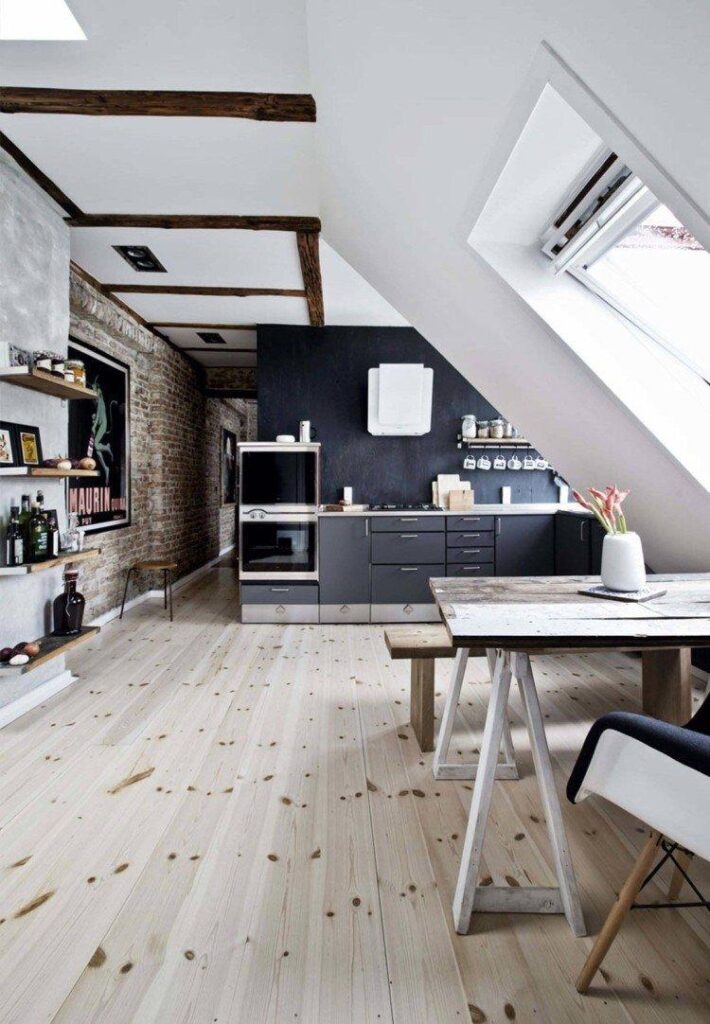
Designing an office in an attic
If you need to retreat for work or creativity, a personal office is a true lifesaver. It can never be compared to any semi-enclosed area in the living room or bedroom. But usually, there is no space to fit an office in the house, and this is where a small cozy attic far from living spaces comes in handy.
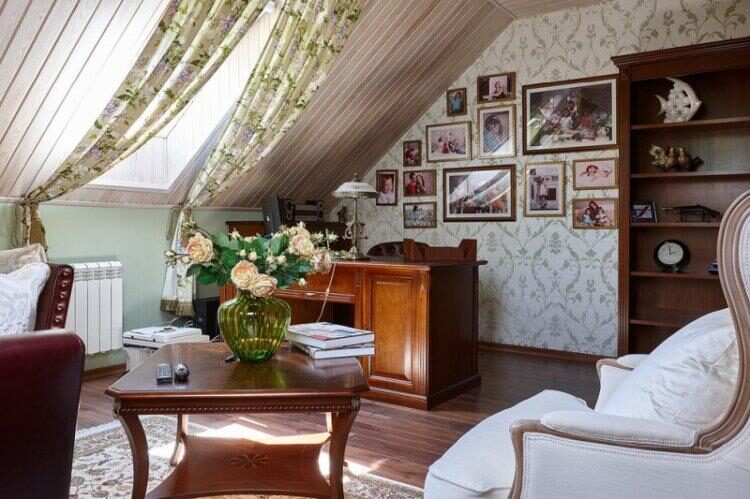
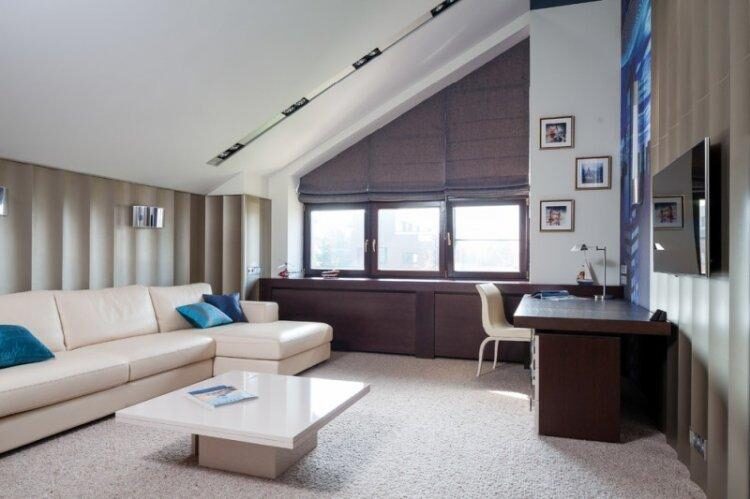
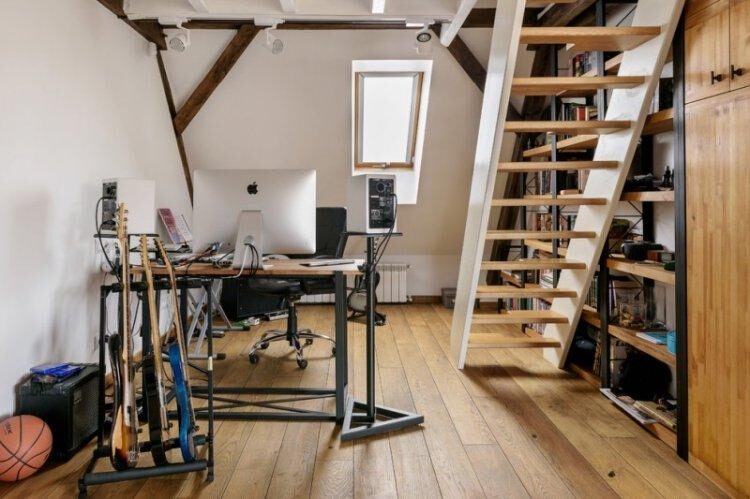
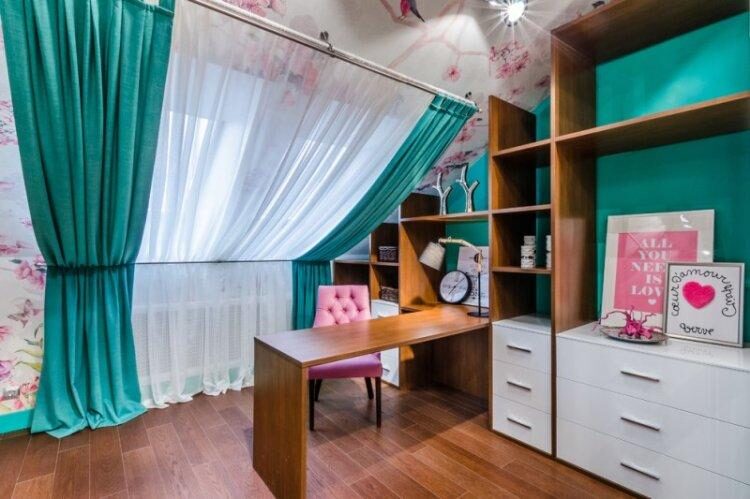
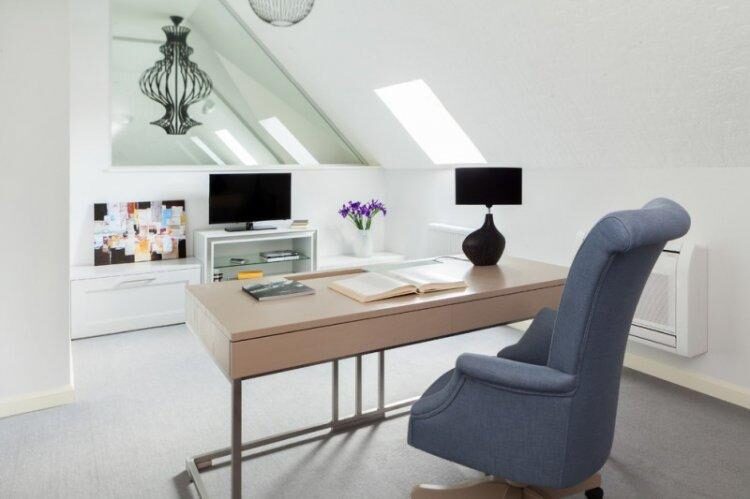
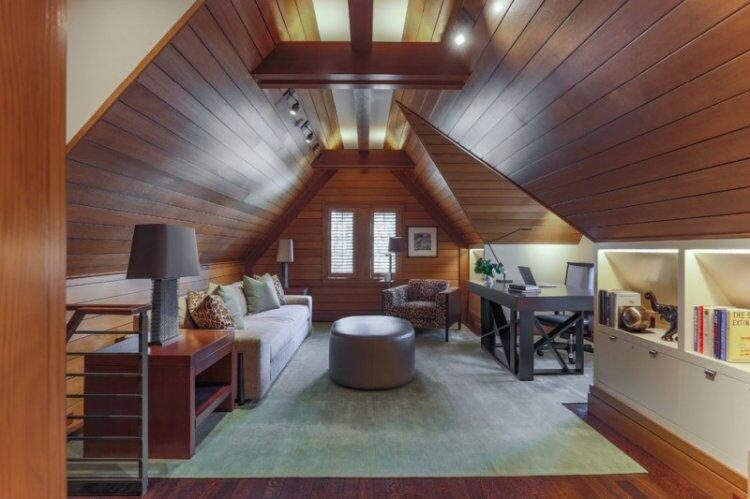
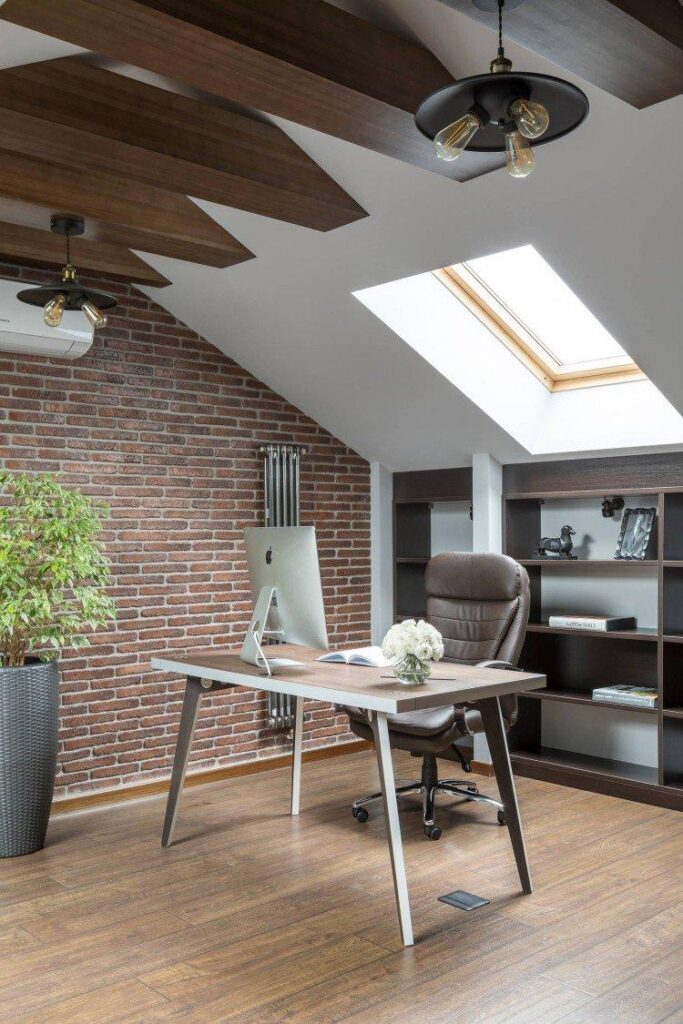
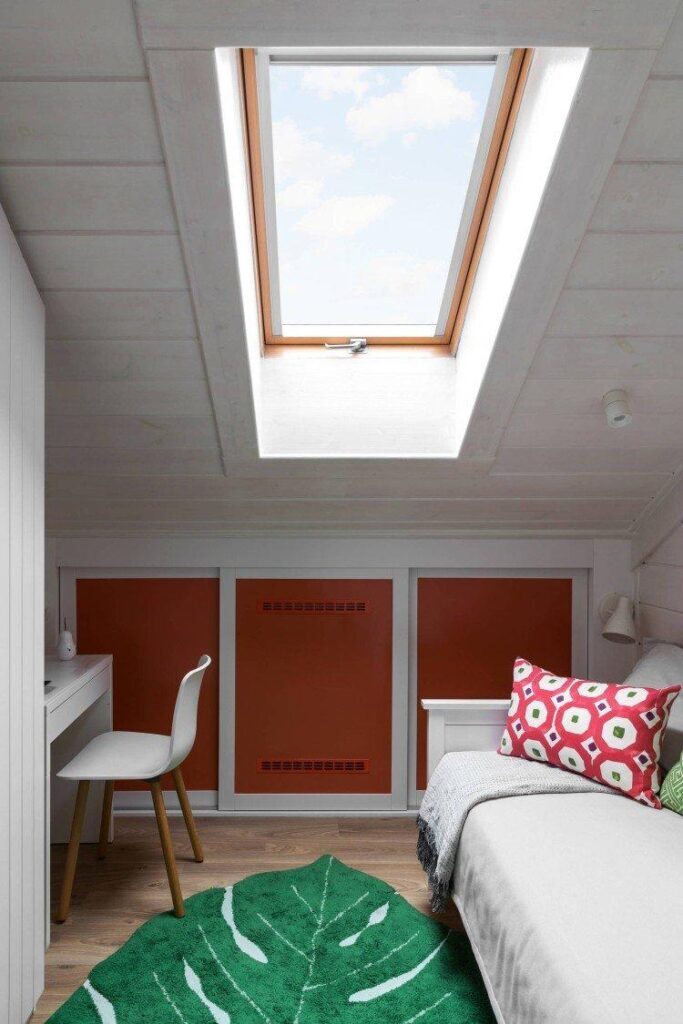
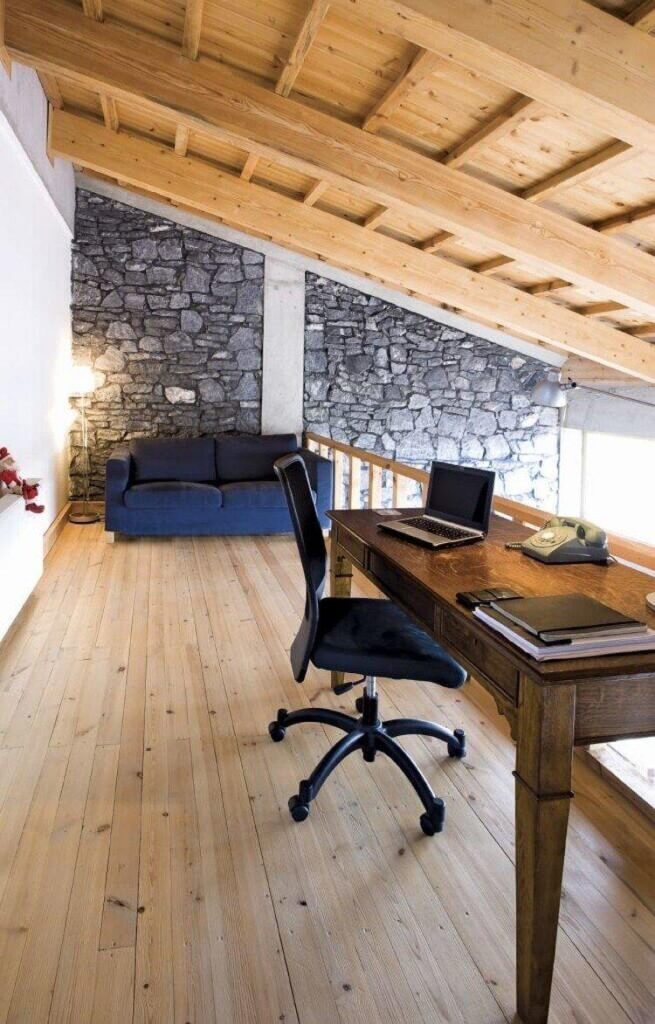
Designing a bathroom in an attic
A bathroom on the attic floor is one of the most unconventional solutions, but that’s what makes it attractive. It will require careful technical preparation because you’ll need to supply water and sewage to the area. In addition, bathrooms are always humid and have temperature changes, so additional insulation of the under-roof space is necessary.
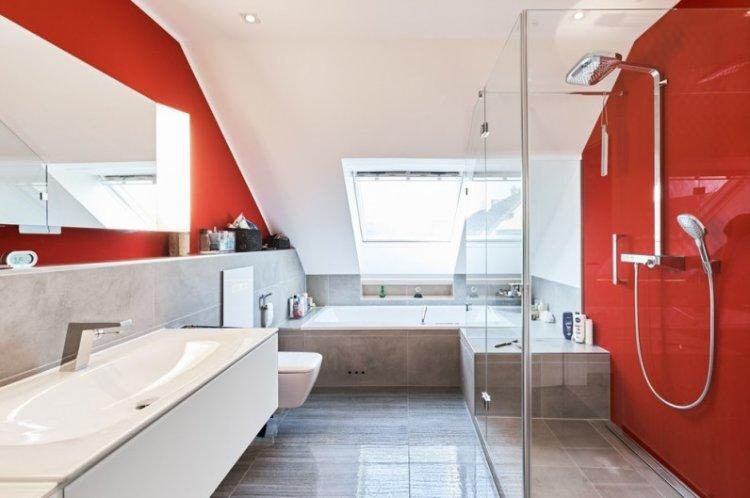
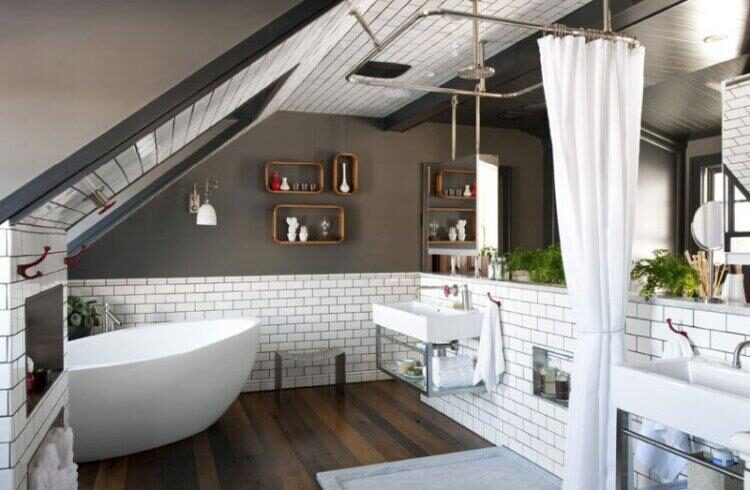
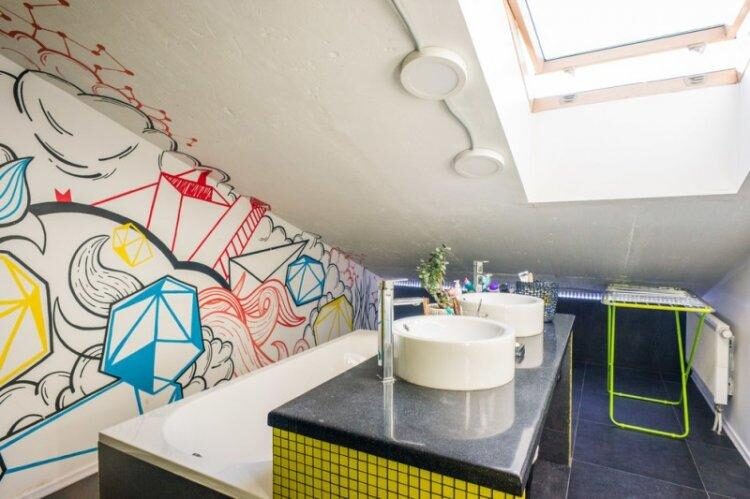
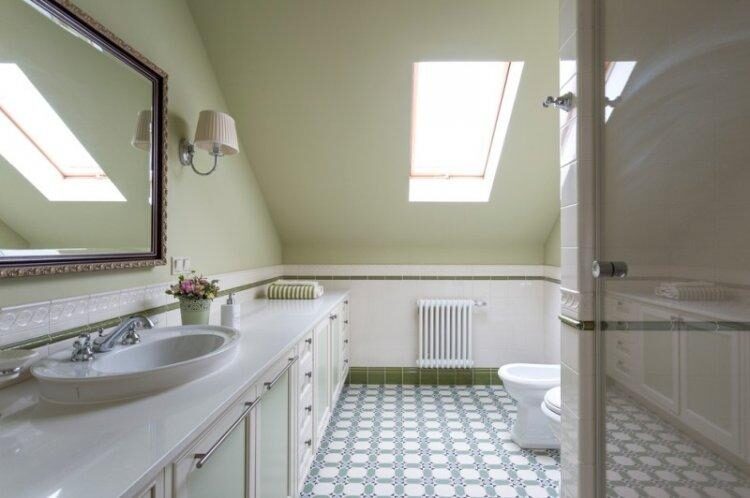
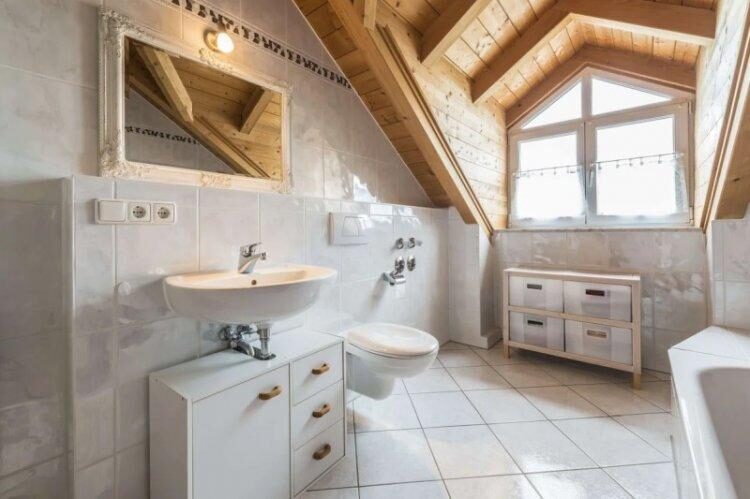
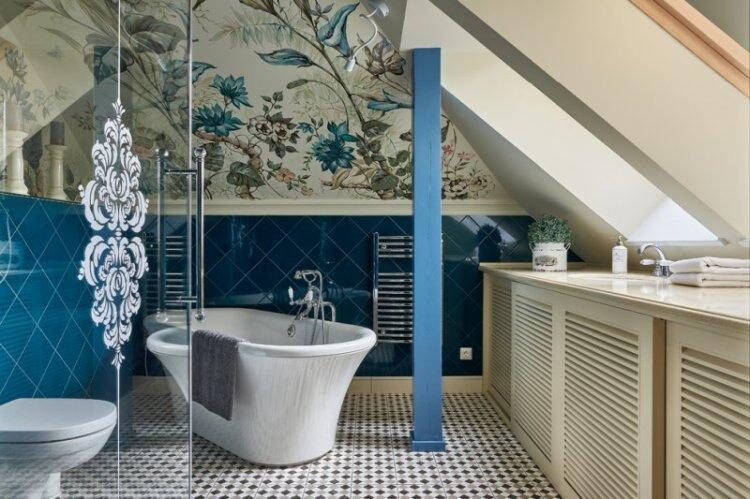
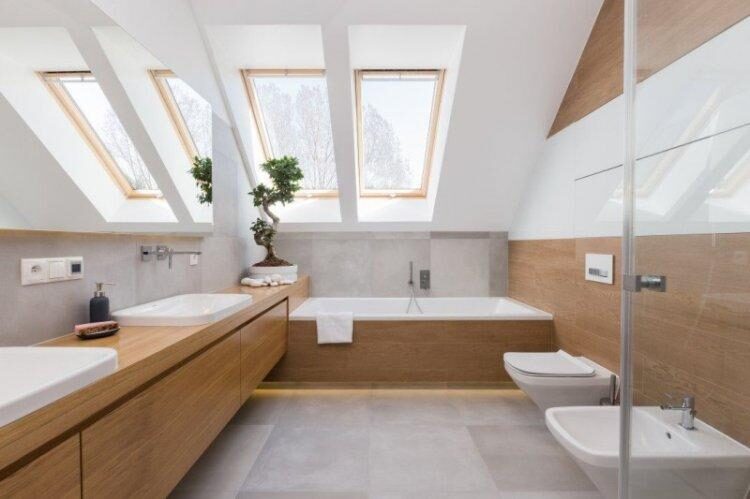

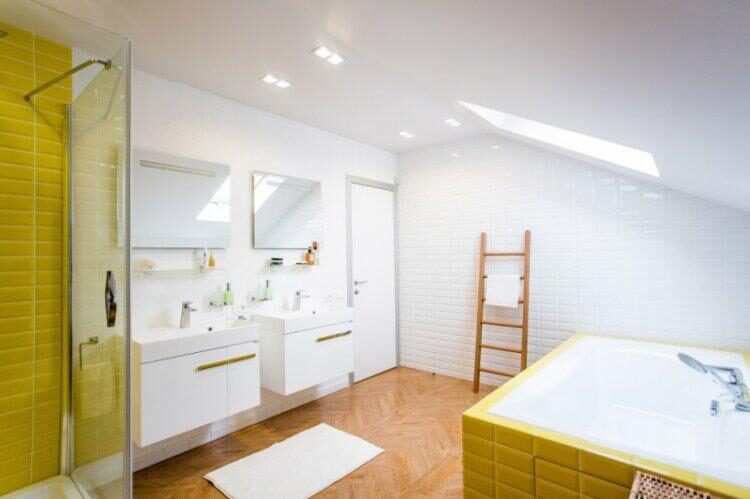
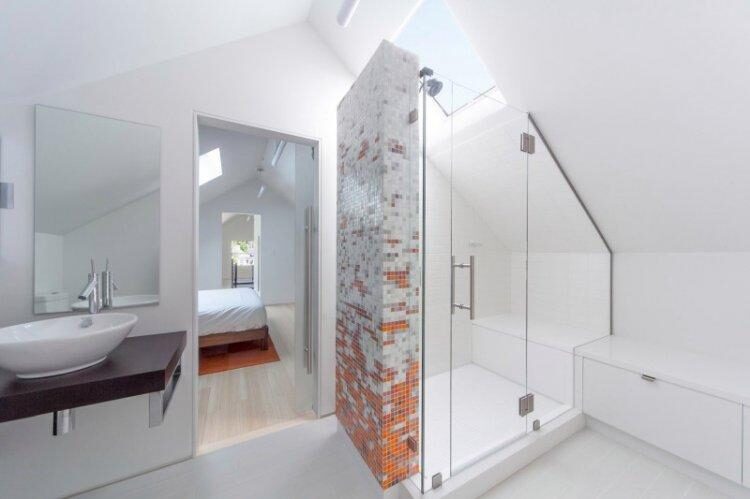
Designing a kids room in an attic
Kids usually get excited about the chance to scale heights, especially when it’s right under the roof. In an attic kid’s room, you can craft a whimsical world, complete with a princess castle or a pirate ship. When you design the room for young ones, prioritize protecting all sharp corners and slanted ceilings to ensure they won’t get hurt.
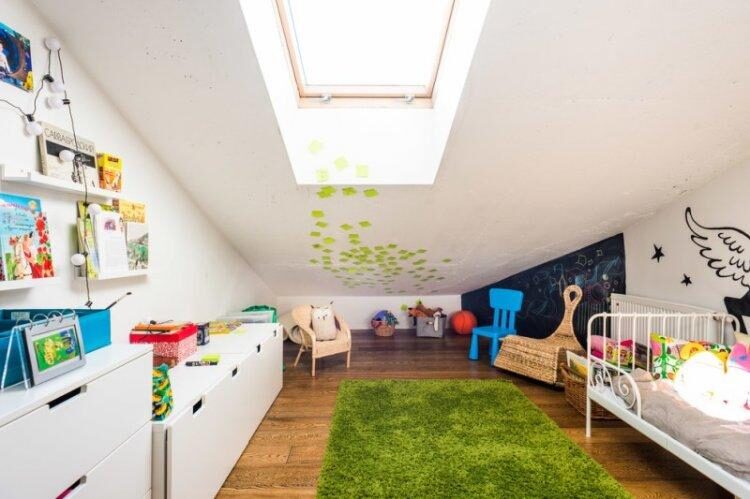
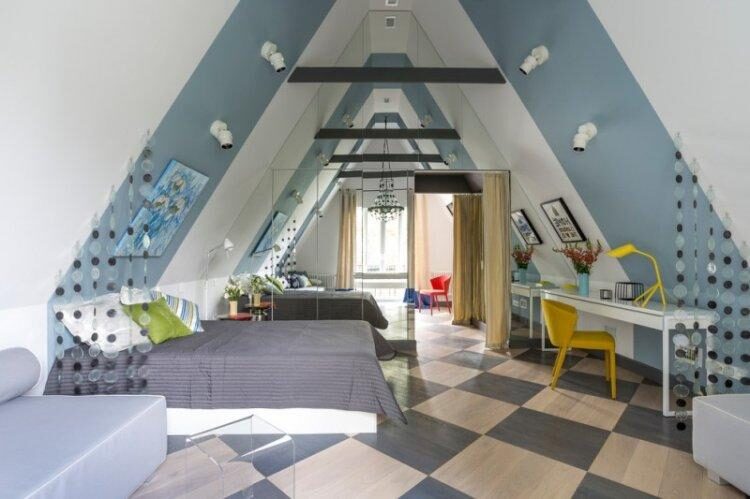
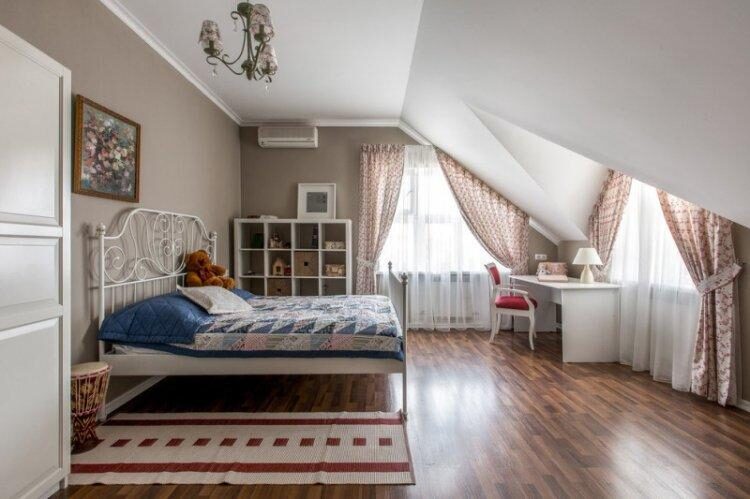
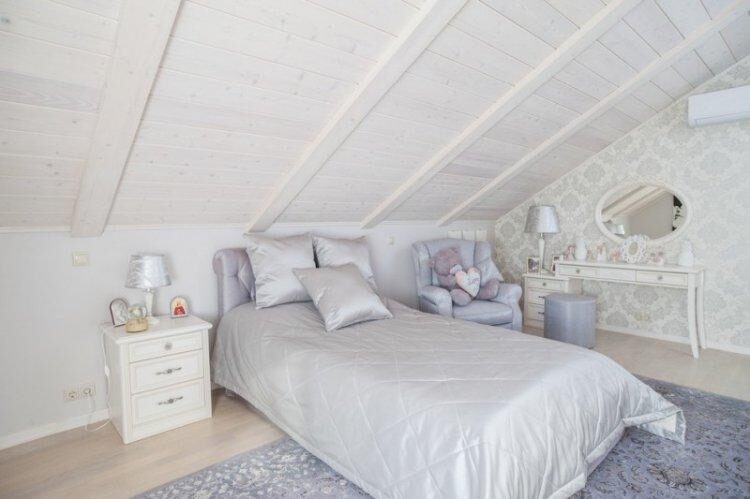
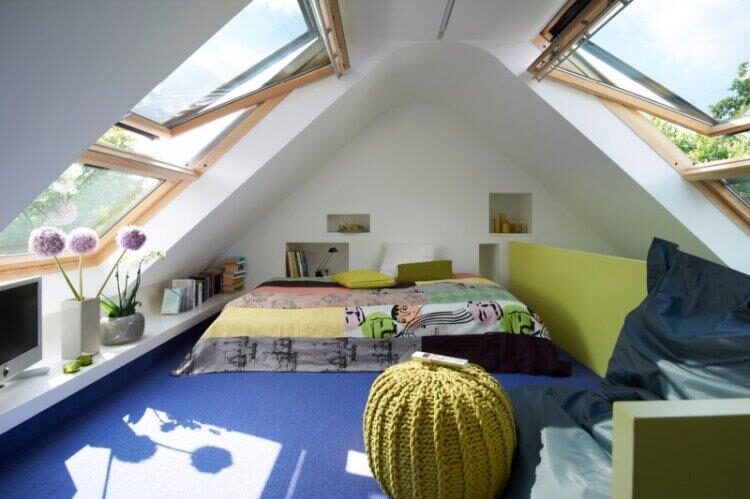


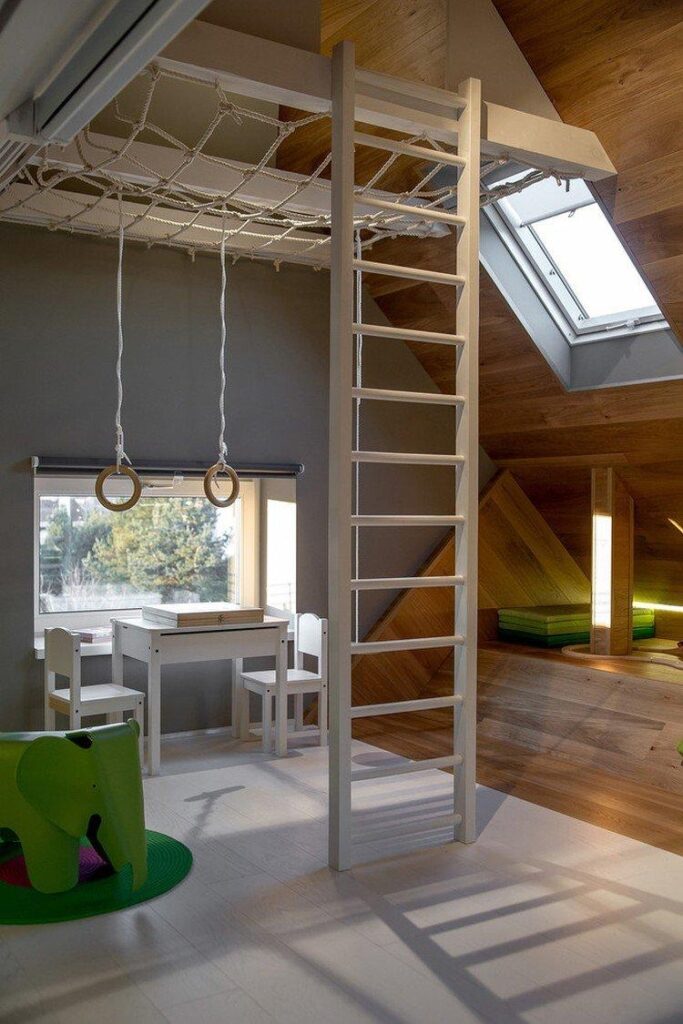
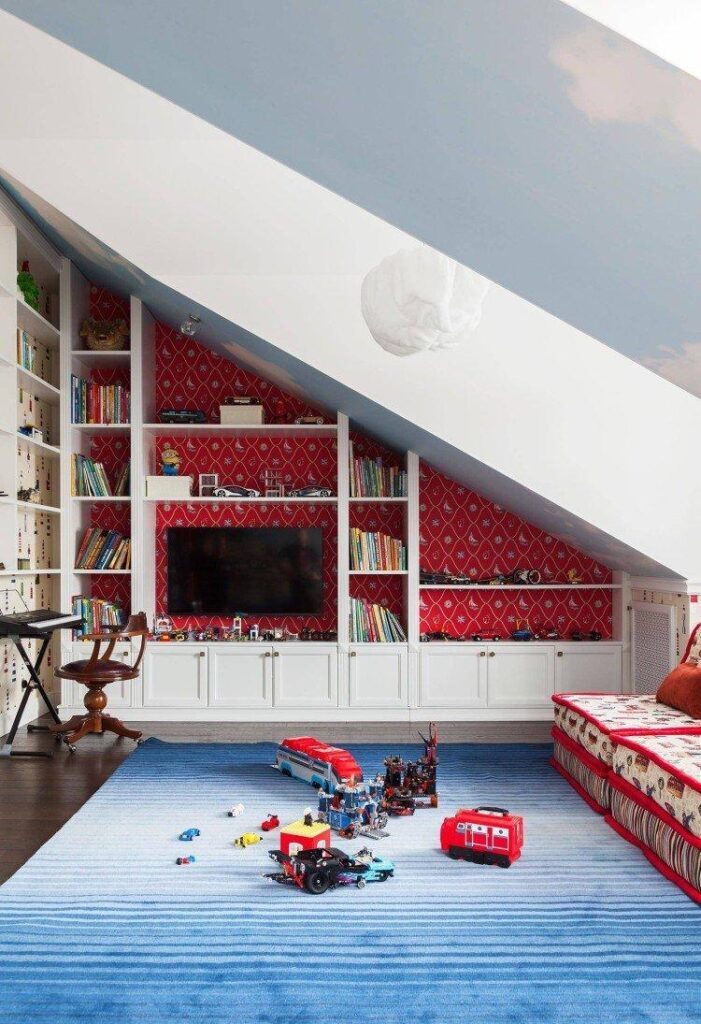
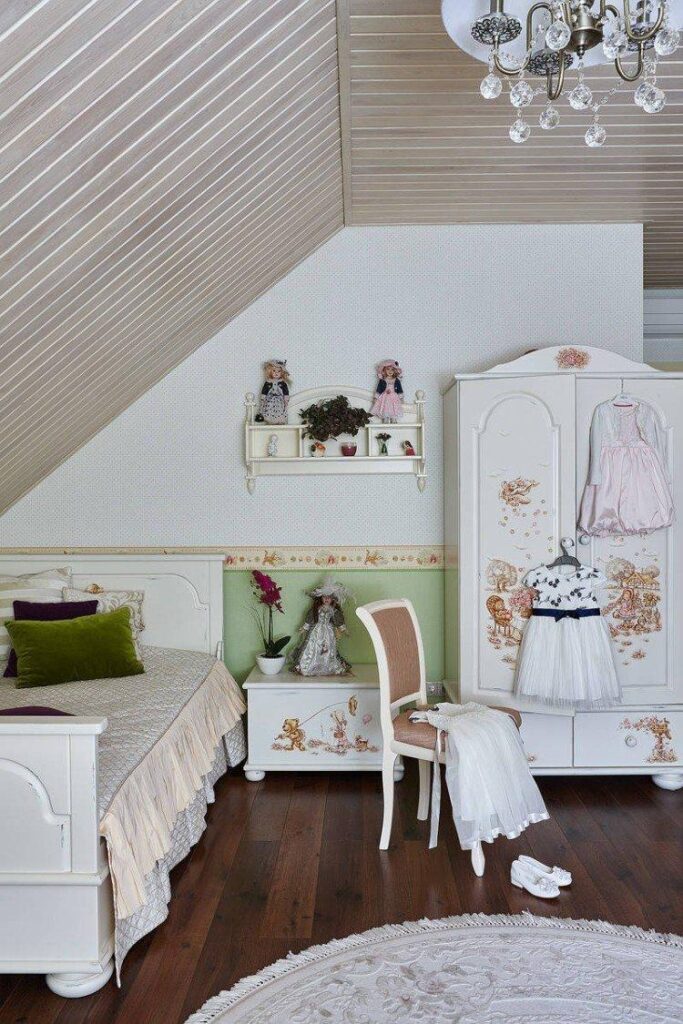

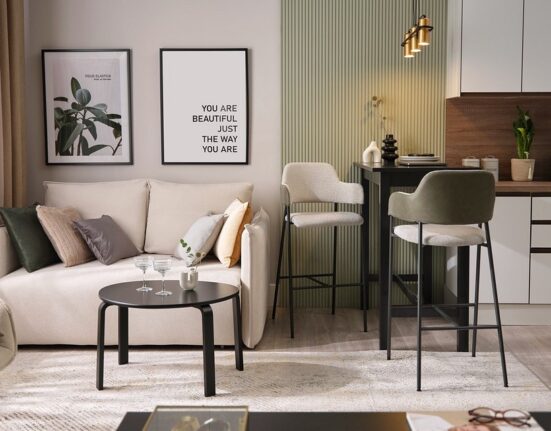
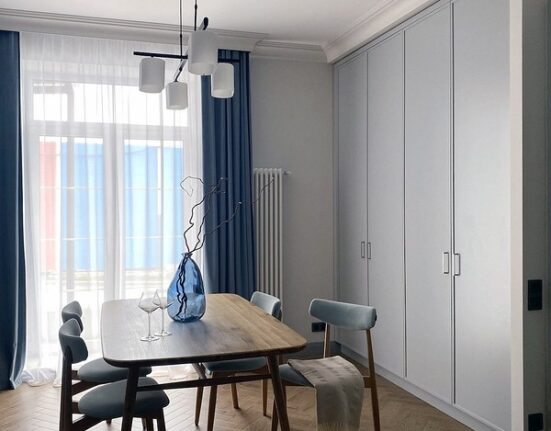
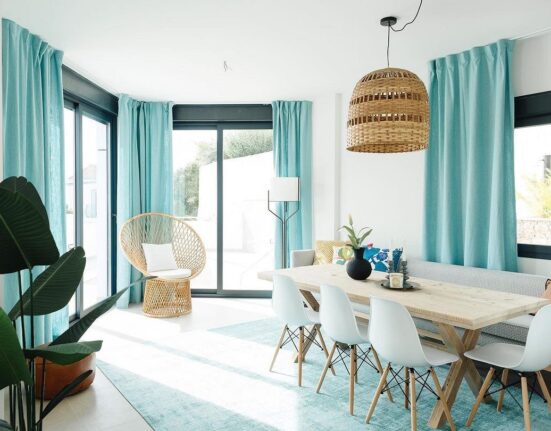
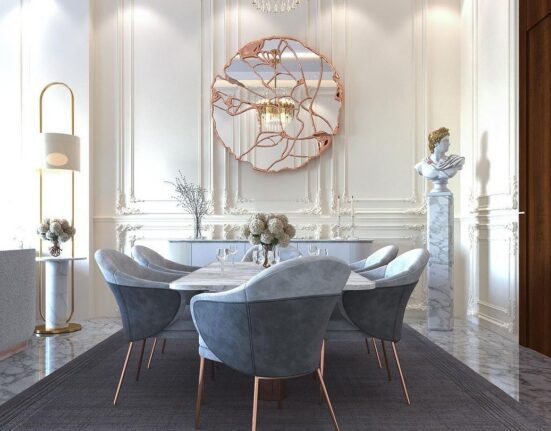

Leave feedback about this